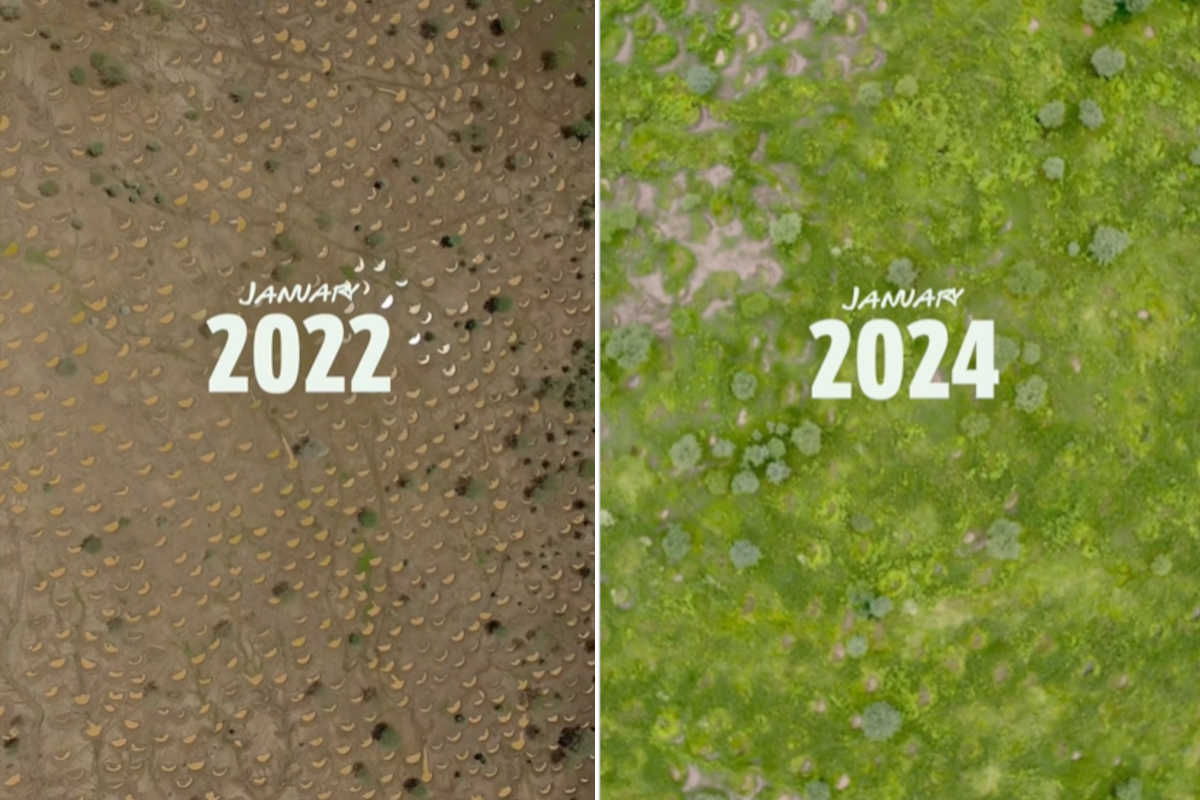A simple but very effective solution for greening African landscapes: digging shallow water basins to collect rainwater, preventing erosion of the fertile soil

@justdiggit/Instagram
The non-profit organization Justdiggit has introduced a clever approach to transform African lands affected by desertification, fostering plant growth and combating erosion phenomena.
Founded by Peter Westerveld and Dennis Karpes, based in Amsterdam with offices in Nairobi, Justdiggit aims to “regreen the African landscapes in the next 10 years, together with millions of farmers.” In Northern Africa, desertification has led to the transformation of fertile farmlands into eroded lands and barren deserts, threatening food security and environmental balance.
Many initiatives have attempted to tackle the issue by planting trees and adopting indigenous land management practices. However, Justdiggit has unveiled a seemingly simple yet highly effective solution.
How justdiggit’s solution works
Justdiggit’s method involves creating “Earth’s smiles,” which are semi-circular shallow water basins, about 5 meters wide and 2.5 meters long. These holes are dug along slopes, allowing water to flow along their natural path.
The upper edge of the hole is rounded and located on the upstream side, while the excavated soil is piled around the lower edge. This creates a depression that collects rainwater, slowing its flow and preventing the erosion of fertile soil.
Justdiggit explains that although the water does not remain long in the hole, the basins slow down and capture rainwater, allowing the soil to reestablish its water balance. This increased availability of water encourages plant growth, helping to reverse the process of desertification.
Plants, in turn, improve growth conditions by creating a virtuous circle of regreening. In numerous videos published on social media, Justdiggit shows the progress made by digging the holes and transforming previously barren areas into land now covered with lush vegetation.
The result demonstrates the potential of this ingeniously simple solution in restoring plant life and combating desertification. Justdiggit’s approach offers tangible proof that even the most elementary solutions can have a significant impact in addressing (and overcoming) complex challenges like desertification.
@justdiggit These #earthsmiles were dug in December 2021. They capture rainwater that will otherwise get washed away over the dry, barren soil. 🌧️ Now, the seeds present in the soil get the chance to sprout, which means: #regreening 🌱🌱🌱 Location: Esilalei, Tanzania 🇹🇿 #climateaction #somethinggood #learnontiktok #africa
Source: Justdiggit
